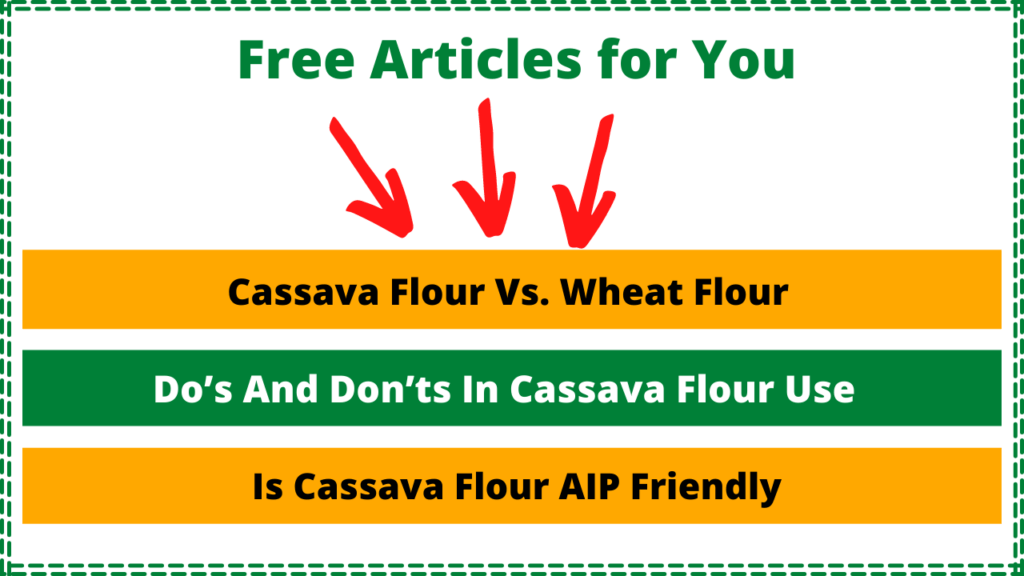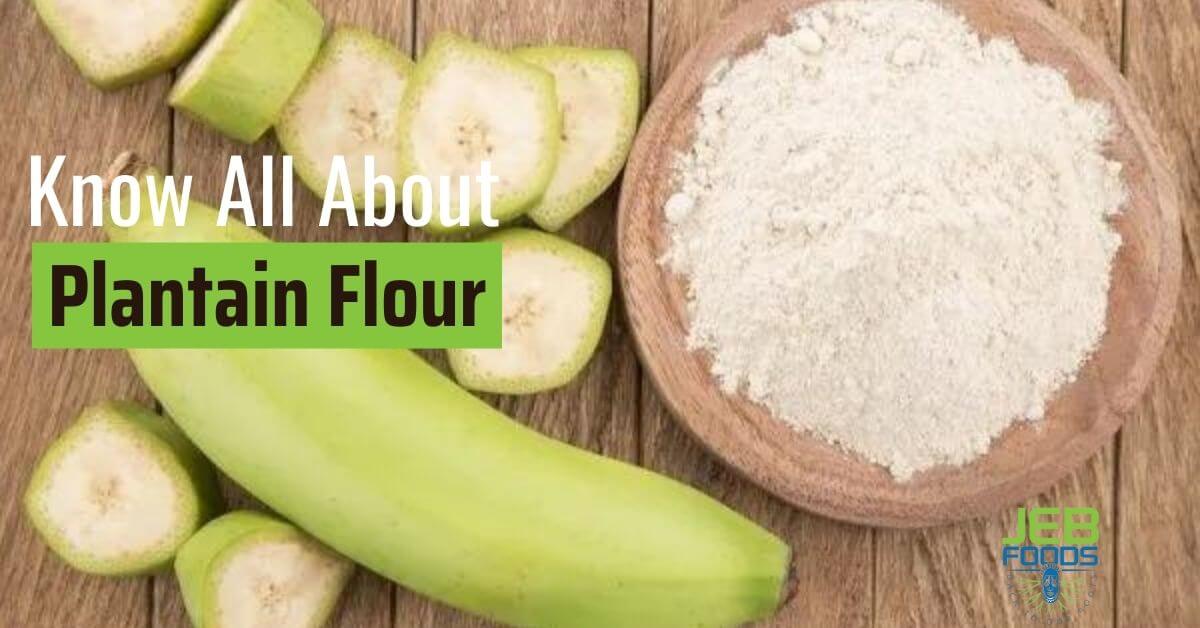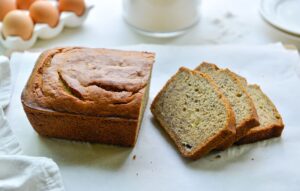Gluten does not include any vital nutrients, which is why you should be baking with gluten-free flour.
Although gluten works as a binder, keeping food together and giving it a “stretchy” texture, it is equally hazardous to health.
Celiac disease causes an immunological response that is caused by gluten consumption.
When people with celiac illness consume gluten-containing meals, individuals experience inflammation and damage in their digestive tracts and other body areas.
Meanwhile, a gluten-free diet can give several health benefits, particularly for individuals who have celiac disease.
It may aid in relieving digestive problems, reducing chronic inflammation, increasing energy, and promoting weight loss.
Let me show you why you should be baking with gluten-free flour and the specific one I recommend.
What Is Gluten
Table of Contents
ToggleGluten is a naturally occurring component of wheat, rye, barley, oats, and green spelt, as well as other related grain and ancient grain varieties (e.g., Kamut).
Gluten is the protein available in a variety of grains, however it turns sticky when it comes into touch with water, which is why it is sometimes referred to as “glue protein.” It binds the different components together into a smooth dough during baking.
Where Do We Find Gluten
Gluten is found in wheat products, mostly baked goods; it’s the net that holds bread together. Cakes, bread, and most baked goods become brittle without gluten.
Although bread begins with many of the same ingredients as cookies, pastries, cakes, and even shortbreads, it has an entirely different consistency. It is the gluten from wheat in bread that gives those airy and chewy qualities.
However, that doesn’t mean it is essential. If you want to bake gluten-free, you only have to pay attention to a few things.
Disadvantages Of Gluten In Our Food
Though gluten helps dough rise by trapping gas bubbles during fermentation and gives bread its unique texture, It does not contain any essential nutrients.
Also, most people with allergies react to gluten. When individuals with celiac disease consume gluten, they develop inflammation and damage in their digestive tracts and other body regions.
Allergic Reactions To Gluten
As with the autoimmune illness celiac disease, the side effects can range from moderate (fatigue, bloating, alternating constipation and diarrhea) to extreme (unintentional weight loss, starvation, intestinal damage).
Some people suffer from gluten intolerance, so-called celiac disease. Your stomach can not process the gluten contained in many kinds of cereal; if you ingest too much of it, they get sick.
You should completely do without gluten-containing products. If you suspect that you do not tolerate gluten well, you should clarify this with a doctor with a diagnosis.
Now Let Us See Gluten-Free Flour As A Better Option
What Is Gluten-Free Flour
Gluten-free flour is a term that is applied to flours that are made of non-gluten-containing products.
There are many kinds of gluten-free flours available at supermarkets these days, along with many “all-purpose” gluten-free flour blends designed to be an easy-to-use replacement for wheat flour.
Does Gluten-Free Flour Work Exactly Like All-Purpose Flour
For conventional recipes to be gluten-free, three properties of wheat flour have to be replaced.
That is why it is usually best to combine three different ingredients: a gluten-free flour as a base, a starch flour to loosen up the baked goods, and a binding agent for volume, cohesion, and moisture.
Some of the flours also described partially fulfill two or all three functions. For example, rice flour serves as a flour mass and starch simultaneously, and soy flour can be used simultaneously as a base flour and binder.
To achieve a baking result similar to wheat flour, I mix different flours with the right consistency.
What Alternative Binding Agents Can Replace Gluten
If you want to bake gluten-free bread, you need to add a gluten-free binding agent to the flour mixture.
To get a dough similar to wheat flour in terms of its consistency and baking properties, mix different gluten-free flours in accurate proportions.
Binding agents like xanthan gum, psyllium husk powder, and guar gum are commonly used in gluten-free recipes and perform the same function as thickeners and binding agents.
You can select any of them or mix them for the best results.
I believe that a binding agent should only be used in gluten-free recipes with high-fat content.
That is, at least, my experience with gluten-free baking.
The protein (gluten) in the gluten-free flour in gluten-free baking serves the same purpose as guar gum, psyllium husk powder, and xanthan gum in gluten-free baking.
Similar results can be obtained by combining the appropriate gluten-free flours with other ingredients such as eggs, milk, and butter.
See which flour is a binding agent
Is Xanthan Gum Gluten-Free
Yes, xanthan gum is gluten-free. Xanthan gum is corn sugar that bacteria have fermented.
When used in baking, it aids starches in combining to trap air, while guar gum aids in keeping large particles suspended in the mix.
Psyllium husk powder is used to keep the bread moist and prevent it from becoming too crumbly.
Guar gum is ideal for cold foods like ice cream or pastry fillings, whereas xanthan gum is ideal for baked goods like yeast bread.
- For both purposes, I used psyllium husk powder.
- Foods high in acid (such as lemon juice) can cause guar gum to lose its thickening ability.
- For citrus-based recipes, use xanthan gum or increase the amount of guar gum used.
When it comes to picking one, there are no hard and fast rules; you’ll have to try out to discover what works best in your recipes.
Most containers of xanthan gum, psyllium husk powder, and guar gum have a specific usage for chosen recipes.
Is Psyllium Husk Free Of Gluten
Yes, psyllium husk is free of gluten. People use psyllium husk powder as a gluten-free recipe binding agent instead of xanthan gum or guar gum.
Substitute For Psyllium Husk
It is not proper to directly ingest psyllium husk, guar gum, or xanthan gum, but you can use them to keep your ingredients together.
You should add guar gum or xanthan gum; do not replace it 1:1; instead, use 1/2 to 1/3 times as much.
As an example: If a recipe requires 1 tablespoon psyllium husk, substitute 1 teaspoon xanthan gum.
Substitute For Psyllium Husk Powder
Psyllium Husk Powder is psyllium husk in powder form. If you cannot consume psyllium husk, you can substitute guar gum or xanthan gum to help bind your ingredients.
Measurements For Gluten-Free Binding Agents That Are Useful
- Gluten-free baking with Xanthan Gum:
- Cakes and Pancakes: 1/4 teaspoon per cup of flour
- 1/2 teaspoon in a cup of flour in muffins and
- quick bread 3/4 teaspoon per cup of flour
- Bread 1 to 1/2 teaspoon per cup of flour
- Cookies made with gluten-free guar gum 1/4 to 1/2 tsp per cup of flour
- Cakes and Pancakes 3/4 teaspoon per cup of flour
- Muffins and Quick Bread 1 teaspoon per cup of flour
- Bread 1 to 2 teaspoons per cup of flour
Advantages Of Gluten-Free Flour
To treat celiac disease
Gluten causes the immune system to attack the small intestine in people with this autoimmune disease. Gluten, even in trace amounts, can cause significant harm.
Due to repeated attacks, the small intestine loses its capacity to absorb essential minerals such as calcium and iron.
Untreated celiac disease can cause serious nutritional deficiencies such as osteoporosis, iron deficiency anemia, and other autoimmune illnesses.
It can cause excessive tiredness, infertility, neurological difficulties, and small intestinal cancer in a very rare proportion of patients.
If you have celiac disease, the therapy is to consume a gluten-free diet; this helps the small intestine repair and absorb nutrients efficiently, reducing the chance of problems.
Herpetiform dermatitis treatment (DH).
DH is a celiac disease that occurs when the immune system targets the skin rather than the small intestine.
It is characterized by a persistent itchy, bumpy rash that can be painfully unpleasant. The development of a rash after consuming gluten is a telltale symptom of DH; the inflammation is generally symmetrical – if you get a rash on your left elbow, you will almost certainly develop a rash on your right elbow.
People with DH who continue to consume gluten may be at an increased risk of developing intestinal cancer.
However, people with DH are usually very motivated to follow a gluten-free diet to avoid these painful rashes once diagnosed.
To alleviate gluten sensitivity symptoms.
Gluten sensitivity, unlike celiac disease and DH, is not an autoimmune disease.
It’s similar to lactose intolerance – the inability to process or metabolize lactose – except gluten isn’t metabolized.
When gluten is consumed, people with gluten sensitivity experience gastrointestinal distress ranging from diarrhea, gas, and bloating to constipation and irritable bowel symptoms.
Gluten sensitivity does not appear to be as important for long-term health as avoiding gluten – it seems to be more of a matter of choice to prevent symptoms.
Although a slice of pizza may cause some short-term digestive discomfort, it is not thought to increase the risk of serious long-term consequences.

How Can I Transition From Gluten To Gluten-Free Flour
When you first go gluten-free, baking is usually the most affected. How can you make a beautiful layer cake gluten-free and expect it to taste good?
Believe it or not, some simple recipe modifications allow you to avoid gluten while still enjoying delicious baked goods.
Almost all recipes can be made gluten-free. Try out these suggestions and swaps.
3. Flour swap: Use all-purpose gluten-free flour instead of regular all-purpose flour in a 1:1 ratio. Use 1 teaspoon of xanthan gum in baked goods such as cakes and bread.
4. Remove the flour.
Try omitting the flour entirely. If you want peanut butter cookies but don’t want to use flour, try this simple recipe.
5. Mix a gluten-free flour mixture.
Try this combination in place of flour in a recipe.
- 3 cups white or brown rice flour
- 1 cup Jeb Food cassava flour
- 2 cups cassava starch
- 1 teaspoon xanthan gum per 1-1/2 cups flour mixture
Using Jeb Food cassava flour in a standard brownie recipe at a 1:1 ratio yields a good (and tasty) outcome. The resulting product is light and devoid of the gritty flavor associated with gluten-free baked products prepared with rice flour.
Blends of gluten-free flours combined with xanthan or guar gum yield fantastic results, but cassava flour is a wonderful grain-free choice for texture, taste, and simplicity of use.
Play around with ingredients.
When experimenting with new flours and flour combinations, other ingredients in the recipe may need to be adjusted. For example, for every cup of flour in a recipe, use 2-1/2 teaspoons baking powder.
Some flours are drier than others, so you may need to add more liquid ingredients, such as water or oil, depending on the recipe.
Substitution Ratio Of Different Gluten-Free Flour To White Flour
Flour containing gluten should not be replaced 1: 1 with gluten-free flour to avoid problems with the consistency of your pastry.
Depending on which recipes you have for gluten-free baking of cakes, cookies, or bread, the mixing ratio between the gluten-free flours is very different. In principle, however, a similar mixing principle can be recognized.
We recommend a flour mixture of 2 parts of gluten-free flour plus 1 portion of cornstarch and 1 binding agent for gluten-free baking.
This mixing ratio is particularly suitable for gluten-free baking of sweet pastries such as cakes or cookies. You can find out which gluten-free flours are ideal for this.
If you don’t want to mix your flour yourself, you can also get gluten-free baking mixes with a suitable recipe for bread, cakes, pizzas, and more.
How Do Gluten-Free Flour Mixes Behave When Baking
When baking gluten-free, always remember that gluten-free flour and gluten flour mixtures behave significantly differently from rye or wheat flour.
A gluten-free dough usually requires more liquid than dough made from wheat flour.
However, you shouldn’t lower the volume of liquid or raise the quantity of flour in a recipe. Unfortunately, It is possible that your pastry may fail later on due to it becoming too dry and hard.
Final Thought
It is of huge benefit to start baking with gluten-free flour. Glutens are without any nutrients; therefore, they should be avoided in baking, since it can be the cause of numerous illnesses.
See more about the gluten-free mix to give you expanded choices and healthy flour for your baking without sacrificing the taste and look of your favorite diet.




